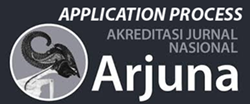Analysis of BI7DRR’s Relationship to Inflation 2018-2023: Case Study on Granger Causality
DOI:
https://doi.org/10.59653/jbmed.v2i03.994Keywords:
Inflation, bi7drr, backward-looking, granger causality, economicsAbstract
An assessment of a nation's economic health may be made by examining its rate of inflation. Good economic conditions can be said if the inflation rate is low or at the predetermined inflation target position. A new reference rate called BI7DRR is transactional, meaning it is exchanged on the market, and it promotes the depth of the financial markets. It also has a higher correlation with money market interest rates. The aim of this research is to find a reciprocal relationship (causality) between BI7DRR and inflation and to analyze the characteristics used in determining interest rates. This study employed a quantitative approach using techniques from descriptive analysis. The data used in this research is BI7DRR historical data for 2018-2023 and historical inflation data for 2018-2023. The data was tested using the Granger Causality test with the help of Eviews 12 software. The results of the Granger Causality Test showed an Inflation Probability value of 0.0457 0.05 (5%) and a BI7DRR Probability value of 0.2788 0.05 (5%). So it can be said that the Inflation variable has a relationship with the BI7DRR variable and the BI7DRR variable has no relationship with the Inflation variable. According to the research description given above, the following conclusions can be drawn: there is a one-way relationship between the inflation and BI7DRR variables in 2018–2023, the BI7DRR variable and the inflation variable in 2018–2023, and based on the findings of the Granger causality test and supporting references, it can be claimed that historical inflation data is used to determine the reference interest rate in the form of BI7DRR. This means it is backward-looking
Downloads
References
Bank Indonesia. (2020). BI-Rate. https://www.bi.go.id/id/fungsi-utama/moneter/bi-rate/default.aspx
Hasbi, I., Arifin, A. H., Akbar, H. A., Damanik, D., Runtunuwu, P. C. H., Peranginangin, A. M., Bhegawati, D. A., Hayati, T. P. T. N. H., & Eka, A. P. B. (2024). EKONOMI MONETER (Aslichah (ed.); Issue May). YAYASAN WIYATA BESTARI SAMASTA.
Juhro, S. M., Harmanta, Herdiawan, J., Mochtar, F., Asih, K. N., Prima S, D., & Esti H, D. (2009). Review Penerapan Inflation Targeting Framework di Indonesia. BI Institute, 1–173. https://www.bi.go.id/id/bi-institute/policy-mix/ITF/Pages/REVIEW-Penerapan-Inflation-Targeting-Framework-di-Indonesia.aspx
Kalsum, U. (2017). PENGARUH PENGANGGURAN DAN INFLASI TERHADAP PERTUMBUHAN EKONOMI DI SUMATERA UTARA. 17, 87–94.
Khilmi, M. F. (2018). Uji Kausalitas Granger Antara Pertumbuhan Laba dan Model Harga Saham Pada PT BankRakyat Indonesia TBK ( Study Pada Tahun 2012 – 2017). 1–100.
Lubis, N. permata sari. (2022). Analisis Pengaruh JUB, E-Money dan BI7DRR Terhadap Inflasi Di Indonesia Pada Masa Pandemic Covid-19. Journal Economics and Strategy, 3(2), 33–42. https://doi.org/10.36490/jes.v3i2.356
Luhfiana, H. A. S., Imaniar, L. A., & Mumtaz, J. (2022). Pengaruh Inflasi Dan Suku Bunga Terhadap Pertumbuhan Perekonomian Indonesia. Jurnal Ekonomi, 13, 1–19.
Nasution, L. M. (2017). STATISTIK DESKRIPTIF. Jurnal Hikmah, 14, 49–55.
Nurdin, K., & Fuady, M. S. (2021). Analisis Hubungan Kausalitas Konsumsi Energi (Terbarukan Dan Tidak Terbarukan) Dengan Pertumbuhan Ekonomi Indonesia. Jurnalku, 1(4), 379–389. https://doi.org/10.54957/jurnalku.v1i4.83
Ph.D. Ummul Aiman, S. P. D. K. A. S. H. M. A. Ciq. M. J. M. P., Suryadin Hasda, M. P. Z. F., M.Kes. Masita, M. P. I. N. T. S. K., & M.Pd. Meilida Eka Sari, M. P. M. K. N. A. (2022). Metodologi Penelitian Kuantitatif. In Yayasan Penerbit Muhammad Zaini. Yayasan Penerbit Muhammad Zaini Anggota IKAPI (026/DIA/2012).
Pindyck, R. S., & Rubinfeld, D. L. (2005). MICROECONOMICS (8th ed.). Pearson Education.
Prasasti, K. B., & Slamet, E. J. (2020). Pengaruh Jumlah Uang Beredar Terhadap Inflasi Dan Suku Bunga, Serta Terhadap Investasi Dan Pertumbuhan Ekonomi Di Indonesia. Jurnal Ekonomi Dan Bisnis Airlangga, 30(1), 39. https://doi.org/10.20473/jeba.v30i12020.39-48
Susilowati, M. W. K., & Wahyuningdyah, R. Y. (2018). Efektivitas BI7DRR dalam Kerangka Mekanisme Transmisi. Jurnal PRAXIS, 1(1), 78–92.
Susmiati, S., Giri, N. P. R., & Senimantara, N. (2021). Pengaruh Jumlah Uang Beredar dan Nilai Tukar Rupiah (Kurs) Terhadap Tingkat Inflasi di Indonesia Tahun 2011-2018. Warmadewa Economic Development Journal (WEDJ), 4(2), 68–74. https://doi.org/10.22225/wedj.4.2.2021.68-74
Warjiyo, P. (2003). kebijakan Moneter di Indonesia (Issue 6). Pusat Pendidikan dan Studi Kebanksentralan (PPSK) BANK INDONESIA.
Downloads
Published
How to Cite
Issue
Section
License
Copyright (c) 2024 M. Wesla Dhifayana Sukirman, Arief Bachtiar

This work is licensed under a Creative Commons Attribution-ShareAlike 4.0 International License.
Authors who publish with this journal agree to the following terms:
- Authors retain copyright and grant the journal right of first publication with the work simultaneously licensed under a Creative Commons Attribution-ShareAlike that allows others to share the work with an acknowledgement of the work's authorship and initial publication in this journal.
- Authors are able to enter into separate, additional contractual arrangements for the non-exclusive distribution of the journal's published version of the work (e.g., post it to an institutional repository or publish it in a book), with an acknowledgement of its initial publication in this journal.
- Authors are permitted and encouraged to post their work online (e.g., in institutional repositories or on their website) prior to and during the submission process, as it can lead to productive exchanges, as well as earlier and greater citation of published work (See The Effect of Open Access).





























